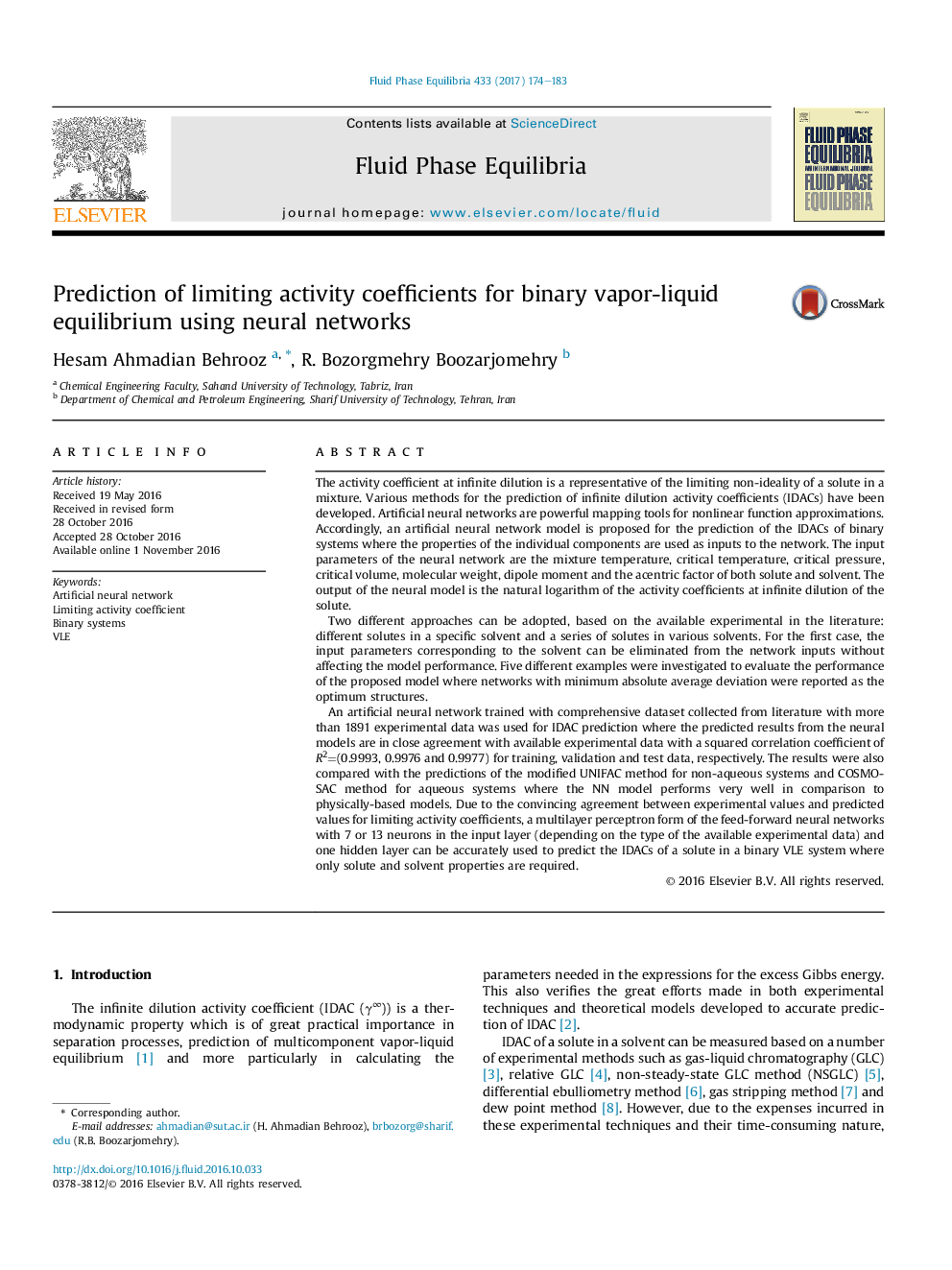| کد مقاله | کد نشریه | سال انتشار | مقاله انگلیسی | نسخه تمام متن |
|---|---|---|---|---|
| 6473322 | 1424524 | 2017 | 10 صفحه PDF | دانلود رایگان |
- Infinite dilution activity coefficient (IDAC) of binary VLE systems are addressed.
- A multilayer feed-forward neural network model for IDAC prediction is proposed.
- Developed neural model only requires the solute and solvent properties.
The activity coefficient at infinite dilution is a representative of the limiting non-ideality of a solute in a mixture. Various methods for the prediction of infinite dilution activity coefficients (IDACs) have been developed. Artificial neural networks are powerful mapping tools for nonlinear function approximations. Accordingly, an artificial neural network model is proposed for the prediction of the IDACs of binary systems where the properties of the individual components are used as inputs to the network. The input parameters of the neural network are the mixture temperature, critical temperature, critical pressure, critical volume, molecular weight, dipole moment and the acentric factor of both solute and solvent. The output of the neural model is the natural logarithm of the activity coefficients at infinite dilution of the solute.Two different approaches can be adopted, based on the available experimental in the literature: different solutes in a specific solvent and a series of solutes in various solvents. For the first case, the input parameters corresponding to the solvent can be eliminated from the network inputs without affecting the model performance. Five different examples were investigated to evaluate the performance of the proposed model where networks with minimum absolute average deviation were reported as the optimum structures.An artificial neural network trained with comprehensive dataset collected from literature with more than 1891 experimental data was used for IDAC prediction where the predicted results from the neural models are in close agreement with available experimental data with a squared correlation coefficient of R2=(0.9993, 0.9976 and 0.9977) for training, validation and test data, respectively. The results were also compared with the predictions of the modified UNIFAC method for non-aqueous systems and COSMO-SAC method for aqueous systems where the NN model performs very well in comparison to physically-based models. Due to the convincing agreement between experimental values and predicted values for limiting activity coefficients, a multilayer perceptron form of the feed-forward neural networks with 7 or 13 neurons in the input layer (depending on the type of the available experimental data) and one hidden layer can be accurately used to predict the IDACs of a solute in a binary VLE system where only solute and solvent properties are required.
Journal: Fluid Phase Equilibria - Volume 433, 15 February 2017, Pages 174-183
